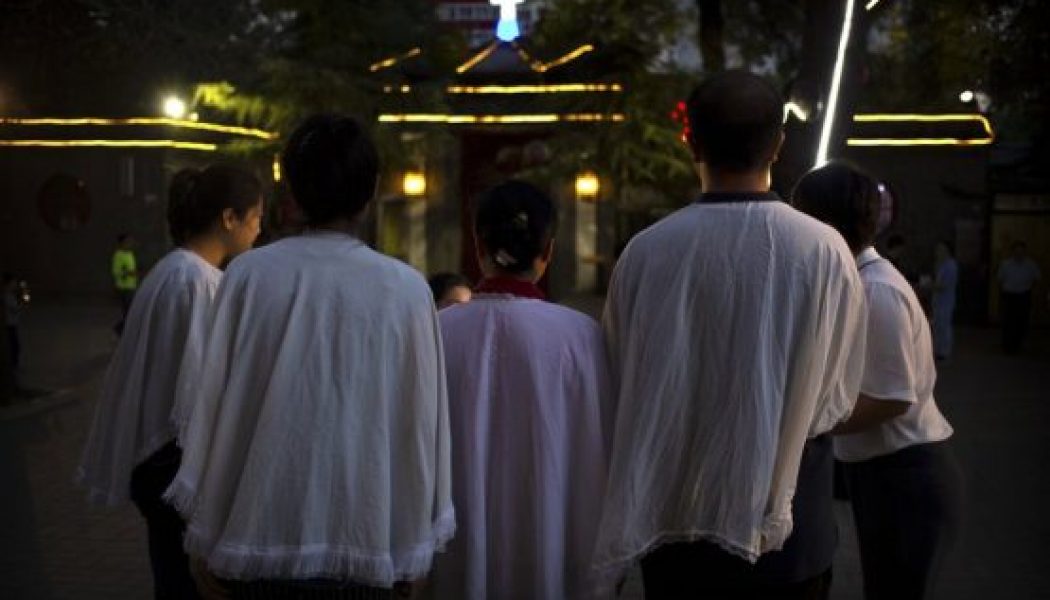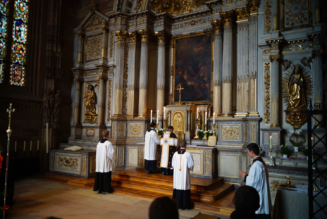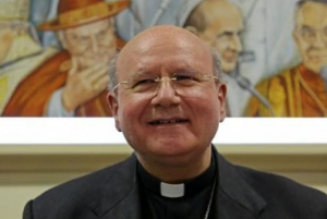ROME – China, in a sense, has become the third rail of geopolitics, in the sense that anything it touches automatically becomes controversial, from cell phones (“are they spying?”) to the coronavirus (“are they lying?”)
Thus it should be no surprise that even a seemingly innocent gesture such as the Jesuit-edited journal Civiltà Cattolica, which enjoys a semi-official Vatican status, launching a new edition in Chinese last month has been swept up into broader tensions about China, including its human rights record and its role in the world.
The edition, which went live April 20, had only been around about a week when a priest-blogger in China named Father Shanren Shenfu, who’s part of the official church, meaning it’s recognized by the government, complained the Vatican was counseling “tolerating evil as good.”
Shenfu’s comment came in response to an article written by Jesuit Father Federico Lombardi, former spokesman for Pope emeritus Benedict XVI, on the history of Vatican-China relations, which originally had been published by Civiltà Cattolica last year. Among other things, Lombardi defended a controversial “provisional agreement” inked between Rome and Beijing in 2018, affording the Chinese government a role in the selection of bishops in the country.

In this Sept. 22, 2018, file photo, members of the faithful gather before a Mass at the Cathedral of the Immaculate Conception, a government-sanctioned Catholic church in Beijing.(Credit: Mark Schiefelbein/AP.)
“If the meaning and spirit of the agreement signed on September 22, 2018, were understood correctly and positively, the support and communion of the Chinese Catholic faithful and of all the people of God with the pope could give a precious contribution to the continuation of a journey that has already begun, producing an increasingly solid fruit,” he wrote.
Shenfu was dismissive of Lombardi’s call for “support” by Chinese Catholics for the state, noting that just a few days before, on Easter Sunday, government officials had torn down a cross from a church in Henan, and that something similar has happened at other churches since the agreement was signed.
“Considering and accepting the removal of the crosses as an everyday event therefore seems to be the only great contribution that the Chinese Catholic faithful and all the people of God can make to the continuation of the agreement,” Shenfu wrote of the Civiltà Cattolica piece, calling that tantamount to saying “coal is white” and a “very sad joke.”

In this April 18, 2018 file photo, Pope Francis meets a group of faithful from China at the end of his weekly general audience in St. Peter’s Square, at the Vatican. (Credit: Gregorio Borgia/AP.)
The Vatican’s deal with Beijing has been controversial from the beginning, in part because its terms remain secret – on theory, perhaps, that a “provisional agreement” does not violate the Vienna Convention’s ban on secret treaties – and in part because critics believe the Vatican gave away too much for relatively little gain.
In a recent interview with the Italian version of Wired, Jesuit father Antonio Spadaro, the editor of Civiltà Cattolica and one of Francis’s closest confidantes, defended the decision to launch a Chinese edition.
“There was an objection that such a choice was being made right now, in the middle of the pandemic, where are discordant and conflicting voices and very strong tensions regarding China,” Spadaro said.
“I’d say it was maybe the worst possible moment, and therefore the best moment,” he said. “This is the time when challenges have to be accepted and bridges have to be built.”
(Spadaro also proudly noted that the new edition is available on WeChat, a messaging app highly popular in China.)
Probably the main take-away is that no matter people may think, the Vatican is moving full-steam ahead in its courtship of Beijing, with the ultimate prize remaining full diplomatic relations, a secure legal standing for the church, and partnerships on the global stage. That’s hardly a policy that began with Pope Francis, but it’s been shared fully by every pontiff since the Communist takeover in 1949.

Archbishop Paul Gallagher, Vatican foreign minister, greets Chinese Foreign Minister Wang Yi Feb. 14, 2020, on the margins of the Munich Security Conference in Munich. (Credit: CNS photo/Vatican Media.)
In terms of why the Vatican is so covetous of a relationship with China, and often apparently willing to stifle objections and give away a great deal, there are four long-standing factors.
First, China is home to one-fifth of the total human population, and you can’t purport to be a global force for good while ignoring 20 percent of the globe. Further, China plays an increasingly critical role in global affairs, and the Vatican’s time-honored belief is that you have to build bridges with the great powers in order to exercise a humanitarian influence on the course of events.
Second, the Vatican is more reticent to push back against China in part because of history – the Chinese Rites controversy, the legacy of colonial adventures such as the Opium Wars, The Boxer Rebellion, and so on. They know that a swath of the Chinese population already looks at Catholicism as “Western” and at Catholics as potentially disloyal, and they don’t want to feed that bias. As a result, Vatican officials generally find it easier to criticize, say, an Italian minister who closes the country’s ports to migrant boats than a Chinese minister who authorizes removing crosses from churches.
Third, China is in some ways the last remaining vast missionary frontier. The religious map of most of the rest of the world is pretty well set – India will be majority Hindu, North America majority Christian, Africa a mix between Islam and Christianity, and so on. Only in China do you have a situation in which a billion people are spiritually hungry after decades of state-imposed atheism, and national identity is not based on any single religion. As a result, the calculation is that leading Beijing to no longer see Catholics as a threat could open up significant possibilities for spreading the faith.

A cross atop a Catholic church is silhouetted in Tianjin, China. (Credit: Kim Kyung-Hoon/Reuters via CNS.)
Fourth, the Vatican also sees the long-running split in China between an “official” and an “underground” Church as injurious to the Church’s health and has long aspired to heal the split. Ending schism historically always has been at the very top of papal to-do lists, and China is no different.
Critics may regard all that as naïve, or weak, or even delusional, and no doubt they’ll be vocal about saying so.
None of that, however, seems likely to stop the Vatican from meeting not only halfway, but sometimes on its home turf – even in virtual spaces such as WeChat.
Follow John Allen on Twitter at @JohnLAllenJr.











